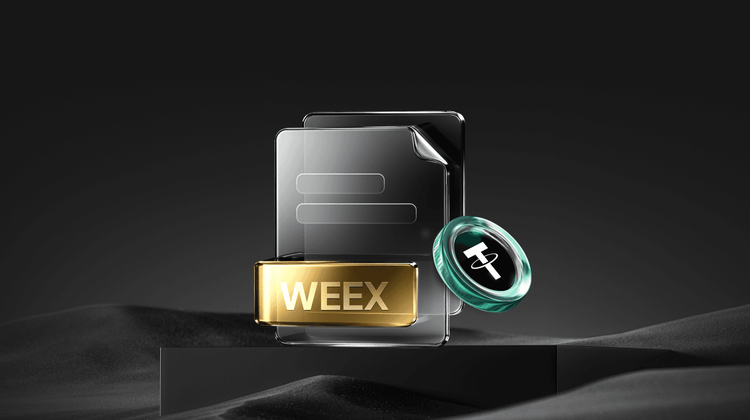Market Volatility Dips Sharply as Traders Gear Up for Powell’s Jackson Hole Address
As financial markets hold their breath ahead of Federal Reserve Chairman Jerome Powell’s key speech at the Jackson Hole Symposium, a striking calm has settled over various asset classes. This drop in volatility seems tied to hopes for continued monetary easing and steady economic growth, though some experts caution about hidden risks that could jolt the peace.
Key Insights on the Volatility Drop
A widespread sense of tranquility is gripping financial instruments as investors anticipate Powell’s address at the yearly Jackson Hole gathering, set for August 21-23. Imagine the markets as a still pond after a storm—everything appears serene, but undercurrents might stir things up.
Bitcoin’s 30-day implied volatility, tracked by indices like Volmex’s BVIV and Deribit’s DVOL, has plummeted in recent times. As of August 20, 2025, data from TradingView shows it lingering around 32%, nearing multi-year lows after dipping below 35% last month— a stark contrast to the spikes seen in previous volatile periods, underscoring traders’ growing confidence.
In a similar vein, the CME Gold Volatility Index (GVZ), which gauges expected 30-day swings in the SPDR Gold Shares ETF (GLD), has more than halved since early 2025. It now stands at 14.1% as of mid-August 2025, its lowest since late 2024, reflecting a cooled-off precious metals sector amid stable global outlooks.
The MOVE index, monitoring 30-day implied volatility for Treasury notes, has also trended downward, hitting a four-year low of 72% in July 2025. Meanwhile, the VIX—often called Wall Street’s fear gauge—slipped below 13% in early August 2025, a big drop from its peaks around 42% earlier this year. This pattern of reduced volatility extends to major currency pairs like EUR/USD, where fluctuations have tightened considerably.
Interest Rates Remain Elevated
This broad decline in market volatility arrives as central banks, especially the Fed, prepare to trim rates from levels that are still quite restrictive, not from emergency lows. Think of it like easing off the brakes on a car that’s been slowed but not stopped—rates are high enough to temper expansion, yet positive real rates after inflation adjustments signal a healthier shift compared to past cycles like post-financial crisis or during the pandemic.
As pseudonymous analyst Endgame Macro pointed out on X, most economies are cutting from these elevated positions, which fuels the ongoing rally in assets from stocks to cryptocurrencies. Evidence backs this: the CME FedWatch tool now projects a 25 basis-point cut in September 2025, picking up the easing pace after a brief hiatus. JPMorgan forecasts the key rate falling to 3%-3.25% by Q1 2026, down 125 basis points from today’s 4.25%.
Observers suggest Powell might hint at further easing in his Jackson Hole remarks. Investment strategist Angelo Kourkafas from Edward Jones noted in a recent post that with inflation steady and labor markets showing strain, the scales could tip toward cuts. He emphasized that after pauses, the trend points downward for rates, fostering this volatility compression tied to prospects of looser policy and economic steadiness.
Are Markets Getting Too Comfortable?
Yet, some skeptics see this low volatility as a red flag of overconfidence, especially with potential trade tariffs from figures like former President Donald Trump looming over growth, alongside persistent inflation signals in recent data. Assets like Bitcoin and gold are trading near all-time highs as of August 2025, with BTC surpassing $90,000 and gold above $2,600 per ounce—levels that scream optimism but invite caution.
Scott Bauer from Prosper Trading Academy highlighted in a Schwab Network chat that volatility seems artificially suppressed amid incoming uncertainties. This view strengthens when eyeing bond markets, where corporate spreads have narrowed to 2007-like lows. Goldman Sachs strategists, including Lotfi Karoui, urged clients in a July 2025 note to hedge against risks like growth shortfalls, fading disinflation, or yield spikes from policy worries.
Remember, volatility tends to swing back—low periods often precede storms, much like a quiet sea before a squall.
In this evolving landscape, platforms like WEEX exchange stand out for their robust tools that help traders navigate these shifts. With a focus on secure, user-friendly trading in cryptocurrencies and derivatives, WEEX enhances credibility by offering low-fee access to real-time volatility indices and hedging options, making it a go-to for those aligning their strategies with market calm or potential upheavals. Its commitment to transparency and innovation positions it as a reliable partner for both novice and seasoned investors seeking to capitalize on Fed-driven opportunities.
Recent online buzz amplifies these themes. Frequently searched Google queries as of August 2025 include “What will Powell say at Jackson Hole 2025?” and “How does low VIX affect Bitcoin trading?”, reflecting investor curiosity about policy impacts. On Twitter (now X), discussions surge around #JacksonHole and #FedRateCuts, with posts from analysts like @EndgameMacro gaining traction for predicting asset rallies. Latest updates include a Fed announcement on August 15, 2025, confirming stable inflation at 2.3% year-over-year, down from 2.5% in July, bolstering easing expectations. Twitter threads also highlight Bitcoin’s resilience, with whales accumulating despite dips, as per on-chain data from Glassnode showing holdings up 5% in Q2 2025.
These elements weave a narrative of cautious optimism, where low volatility invites opportunity but demands vigilance—much like balancing on a tightrope, rewarding those who stay alert.
FAQ
What could cause volatility to spike after the Jackson Hole speech?
Volatility might rise if Powell’s remarks surprise markets with less easing than expected, or if new data shows stubborn inflation or economic slowdowns. Historical patterns, like the 2022 rate hike cycle, show how policy shifts can quickly unsettle calm periods, backed by VIX jumps of over 50% in similar scenarios.
How does low volatility impact cryptocurrency investments like Bitcoin?
Low volatility often signals stability, encouraging long-term holding in assets like Bitcoin, as seen in its steady climb to $90,000 in 2025. However, it can mask risks, making sudden drops more painful—analogous to a calm market lulling investors before a correction, with data from Deribit showing reduced options premiums during such phases.
Should investors hedge against potential market complacency now?
Yes, hedging is wise given warnings from firms like Goldman Sachs about downside risks. Tools like options or diversified portfolios can protect gains, especially with assets at highs; real-world examples from 2007 bond spreads illustrate how complacency preceded turmoil, emphasizing evidence-based strategies for resilience.
You may also like

Hyperliquid Whales Shift Strategies: BTC Longs Decline, ETH Shorts Dominate
Key Takeaways A significant reduction in Bitcoin long positions has been observed on Hyperliquid, with large holders decreasing…

Crypto Christmas Heist: Over $6 Million Lost, Trust Wallet Chrome Extension Wallet Hacked Analysis

Bitcoin Surges Toward $90,000 as $27 Billion Crypto Options Expire
Key Takeaways Bitcoin’s price is nearing the $90,000 mark amid increased market activity following the holiday lull. The…

Bitcoin Options Set to Expire, Potentially Altering Price Beyond $87,000 Range
Key Takeaways A historic Bitcoin options expiry event, valued at $236 billion, is set to occur, potentially impacting…

Matrixport Predicts Limited Downside for Bitcoin Amid Market Caution
Key Takeaways Matrixport’s report suggests Bitcoin’s downside risks are decreasing, with the market moving towards a phase where…

Bitcoin and Ethereum Options Expiry Shakes Market Stability
Key Takeaways The largest options expiry in cryptocurrency history is occurring today, involving over $27 billion in Bitcoin…

Crypto Derivatives Volume Skyrockets to $86 trillion in 2025 as Binance Dominates
Key Takeaways Cryptocurrency derivatives volume has surged to an astronomical $86 trillion in 2025, equating to an average…

Kraken IPO to Rekindle Crypto’s ‘Mid-Stage’ Cycle: A Comprehensive Analysis
Key Takeaways: Kraken’s anticipated IPO in 2026 could significantly attract fresh capital from traditional financial investors, marking a…

Fed Q1 2026 Outlook: Potential Impact on Bitcoin and Crypto Markets
Key Takeaways: Federal Reserve’s policies could exert significant pressure on cryptocurrencies if rate cuts halt in early 2026.…

Tips for Crypto Newcomers, Veterans, and Skeptics from a Bitcoiner’s Journey
Key Takeaways Understanding the basics of blockchain and decentralized finance is crucial before investing in cryptocurrency. Newcomers should…

Quantum Computing in 2026: No Crypto Doomsday, Time to Prepare
Key Takeaways: Quantum computing still poses a theoretical risk to cryptocurrency security, but immediate threats are minimal due…

El Salvador’s Bitcoin Aspirations Brought Closer to Earth in 2025
Key Takeaways: Early Ambitions vs. Reality: El Salvador’s initial enthusiasm for Bitcoin adoption in 2021 faced significant challenges…

Ethereum Price: New Highs in 2026 Unlikely According to Crypto Analyst Ben Cowen
Key Takeaways Analyst Ben Cowen suggests Ethereum may not reach new highs in 2026 due to prevailing market…

Blockchains Quietly Brace for Quantum Threat Amid Bitcoin Debate
Key Takeaways Cryptocurrency networks, especially altcoins, are enhancing security to prepare for potential quantum computing threats. Bitcoin faces…

Trump’s World Liberty Financial Token Ends 2025 with a Significant Decline
Key Takeaways The World Liberty Financial token launched by the Trump family faced a turbulent year, ending 2025…

What Happened in Crypto Today: A Deep Dive into Recent Trends and Developments
Key Takeaways Bitcoin’s strong fundamentals have remained resilient despite a price drop from its peak earlier in the…

Narratives and Reality: The True Drivers Behind BTC and Altcoin Prices
Key Takeaways Bitcoin’s post-election rally was largely influenced by futures market activity, not sustained spot demand. Spot Bitcoin…

Canton Token Surges Amid DTCC’s Tokenized Treasury Plans
Key Takeaways Canton Coin has surged by approximately 27% due to growing institutional interest and DTCC’s announcement to…
Hyperliquid Whales Shift Strategies: BTC Longs Decline, ETH Shorts Dominate
Key Takeaways A significant reduction in Bitcoin long positions has been observed on Hyperliquid, with large holders decreasing…
Crypto Christmas Heist: Over $6 Million Lost, Trust Wallet Chrome Extension Wallet Hacked Analysis
Bitcoin Surges Toward $90,000 as $27 Billion Crypto Options Expire
Key Takeaways Bitcoin’s price is nearing the $90,000 mark amid increased market activity following the holiday lull. The…
Bitcoin Options Set to Expire, Potentially Altering Price Beyond $87,000 Range
Key Takeaways A historic Bitcoin options expiry event, valued at $236 billion, is set to occur, potentially impacting…
Matrixport Predicts Limited Downside for Bitcoin Amid Market Caution
Key Takeaways Matrixport’s report suggests Bitcoin’s downside risks are decreasing, with the market moving towards a phase where…
Bitcoin and Ethereum Options Expiry Shakes Market Stability
Key Takeaways The largest options expiry in cryptocurrency history is occurring today, involving over $27 billion in Bitcoin…
Popular coins
Latest Crypto News
Customer Support:@weikecs
Business Cooperation:@weikecs
Quant Trading & MM:[email protected]
VIP Services:[email protected]
